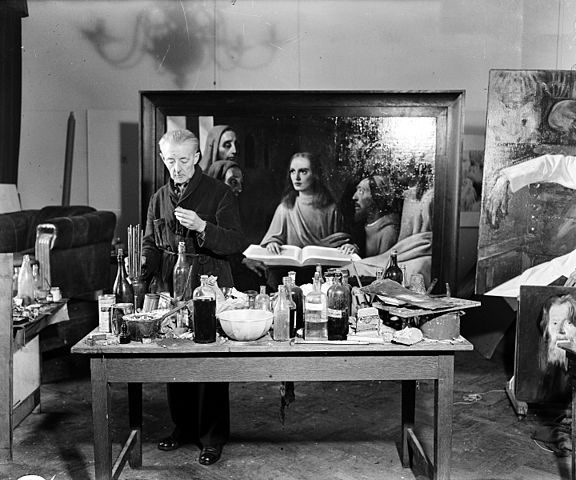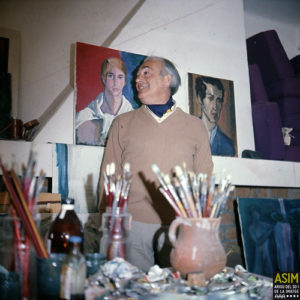From the Newsletter of November 2020. Would you like to receive it by e-mail? Join Muses & A.R.T. !
Or ask it for free via our contact form !
HISTORY OF FORGERIES...
What is a fake ?
A fake or forgery is an imitation of an original work that is not presented as an identical copy but an adaptation or transformation that retains the characteristics of the work with possibly a signature affixed with fraudulent intent. The forgery can also be an original work of which one tries to attribute the paternity to an artist who is not the author. Here are some examples of forgers who have all been brilliant and inventive and who all have in common a personality, a talent but also an exceptional productivity.
HansVan Meegeren (1889-1947)
Perhaps the most astonishing forgery is that of the Dutch painter Hans Van Meegeren. As his original works were not appreciated by the critics, he decided to take revenge by producing forgeries. For six years, he assimilated the techniques, styles and colors of famous painters such as Frans Hals or Peter de Hooch, even immersing himself in their biographies to learn the tools and painting recipes used in the making of the greatest masterpieces. His reproductions are so well executed that even the best art critics cannot tell the difference between fakes and originals.
Van Meegeren developed a particular attachment to the work of Vermeer, a painter who was not well known at the time, and whose paintings were just beginning to interest critics. Among his first forgeries, Van Meegeren produced two inspired by Johannes Vermeer : Woman Reading Music (1934), and Woman Playing Music (1935-36). Indeed Vermeer having been forgotten for a long time, his authenticated corpus is not very important. Van Meegeren’s brilliant idea was to produce biblical paintings that corresponded to the expectations of experts, notably Abraham Brédius, one of the best specialists in Dutch painting of the Golden Age, who was convinced that Vermeer had painted religious scenes. In 1937, Bredius formally authenticated “The Disciples of Emmaus” which was bought at a high price by the Boimans Museum in Rotterdam. Moreover, Van Meegeren had succeeded in rendering a character of antiquity, by integrating in his painting, flakes of varnish of the seventeenth.
So when during the Second World War five other biblical Vermeers were discovered that resembled the disciples of Emmaus, experts had no trouble identifying them. They were bought at a high price by collectors, including one “Christ and the Adulteress” by Herman Göring.
After the war, Han Van Meegeren was accused of having sold a national treasure to a Nazi. He was arrested and quickly confessed, but despite his revelations about the recipes for accelerated aging, he had to repeat his feat in order to prove it. He was therefore placed under house arrest and painted “Christ in the Temple”.
He was sentenced to only one year in prison for having stolen between 25 and 30 million dollars, but he died a few days after the verdict !
Elmyr de Hory and Fernand Legros
Elmyr de Hory, born in 1906, survivor of the Nazi camps and coming from a modest Hungarian family, became one of the greatest forgers of the 20th century. He produced staggering quantities of very good pastiches, at a time when there were still few catalogues raisonnés.
To sell his paintings, he joined forces with Fernand Legros, an art dealer, considered to be one of the greatest swindlers of the genre. He devised a scheme to sell fake paintings in the United States : he spread a rumor that a dealer was transporting authentic works of art, passing them off as copies in order to avoid paying taxes. He then disguised the fake paintings of Elmyr de Hory with unknown signatures over prestigious signatures, and crossed the border with his shipment. American customs officials seized the paintings, studied them and authenticated them. Fernand Legros was fined but left with certified original masterpieces.
Elmyr escaped jail several times. He lived in Ibiza where he became a celebrity in the 70’s, a documentary was even made about him at that time. Legros was finally arrested and served several years in prison. The French justice system requested the extradition of Elmyr de Hory to stand trial in the Legros case in which he was involved. On the verge of being handed over to the French police, de Hory took a lethal dose of sleeping pills.
Mark A. Landis, american painter and forger born in 1955
Mark Landis, diagnosed as a schizophrenic very young, offered for more than 20 years to American museums a lot of fake paintings attributed to famous painters. He chose museums that were not too important and did not have the means to make systematic analyses.
He betrayed himself by offering twice the same fake painting by Signac but as he never made a profit from his donations, no museum considered it worthwhile to pursue him.
Cf. american documentary Art and Craft released in 2014
Wolfgang Beltracchi German painter and forger born in 1951
Wolfgang Beltracchi did not only reproduce paintings of great masters, he created them from scratch, abusing experts and collectors and amassing a small fortune (at least 16 million euros and probably even more) placed in dozens of bank accounts. He and his wife drove Jaguars and frequented the most beautiful palaces in the world when they were not enjoying their superb villas or their yachts. His father, a modest restorer of church paintings to make ends meet, reproduced Rembrandts or Picassos which he then sold as master copies. As an adult, Wolfgang Beltracchi soon followed in his father’s footsteps. But unlike his father, the paintings that he began to execute in his turn with brilliance, were presented as originals at the flea markets where he went to sell them on Sundays.
Beltracchi’s manipulative intelligence, both meticulous and daring, had led him to develop a novel scenario. With his wife, he set up a swindle estimated at several tens of millions. He locates works in the catalogues raisonnés of modern artists that are considered to have disappeared and recreates them. His wife pretends to have inherited the works and poses in the middle of paintings that are supposed to have belonged to her grandmother but which, in reality, are painted by her husband. Thus, with this photograph and other false documents, she obtains certificates of authenticity from the experts.
Beltracchi was careful to put the paintings in the oven to obtain cracks and to use period canvases and frames, but he was nevertheless unmasked because of the use of anachronistic pigment.
Guy Ribes, French painter and forger born in 1940
For more than 20 years, he flooded the market with fake Picasso Chagall, Dufy Léger . … It is estimated that there are 1000 or 2000 forgeries in nature, including 300 or 400 gouaches of Chagall!
His technique : he paints “in the manner of”, so with 2 or 3 works, he makes one ! He also uses period supports. He buys engravings from the 50’s and uses the glass and cardboard with the dust of the time and after a few months the gouache mixes with the dust. He even goes so far as to create marks of old frames on the edges of the canvases.
He works for an important publisher Leon Amiel, friend of Miro Chagall Picasso Dali who authenticates and gives credibility to his paintings.
One anecdote among others : a rabbi went to see Mrs. Chagall with a painting supposedly belonging to the community, she immediately wrote a certificate of authenticity and the painting was sold for several million euros by a major dealer. Like Beltracchi, he was arrested for a small mistake, a vinylic paint on a painting by Fernand Léger !
The reception given to forgeries throughout the ages has been very variable and it was only later that they were considered as frauds. Today, it is the OCBC (french central office for the fight against the traffic of cultural goods) which is in charge of the repression of artistic counterfeiting. Indeed, the cases of forgery follow one another, throwing a discredit on the art market where the value of a work is linked to a name.
Nevertheless, in all these stories, the counterfeiters are very often surrounded by gallery owners, art dealers, and even rightful owners and experts, all of whom make great profits from these deals. It is estimated that the proportion of forgeries in the art market is currently 30% !
To go further...
Reading proposal : Confession d’un faussaire, La face cachée du marché de l’art, of Eric Piedoie Le Tiec
A french book not yet tranlated…
Forger of Toulouse-Lautrec, Chagall, Miro and especially César, Eric Piedoie Le Tiec, retired from business, comes back on his flamboyant career in an edifying book that has just been published. We have read it and always surprised to see how corrupt the art market is, we wanted in the article above to return to the often incredible stories of forgers who have marked their time.


